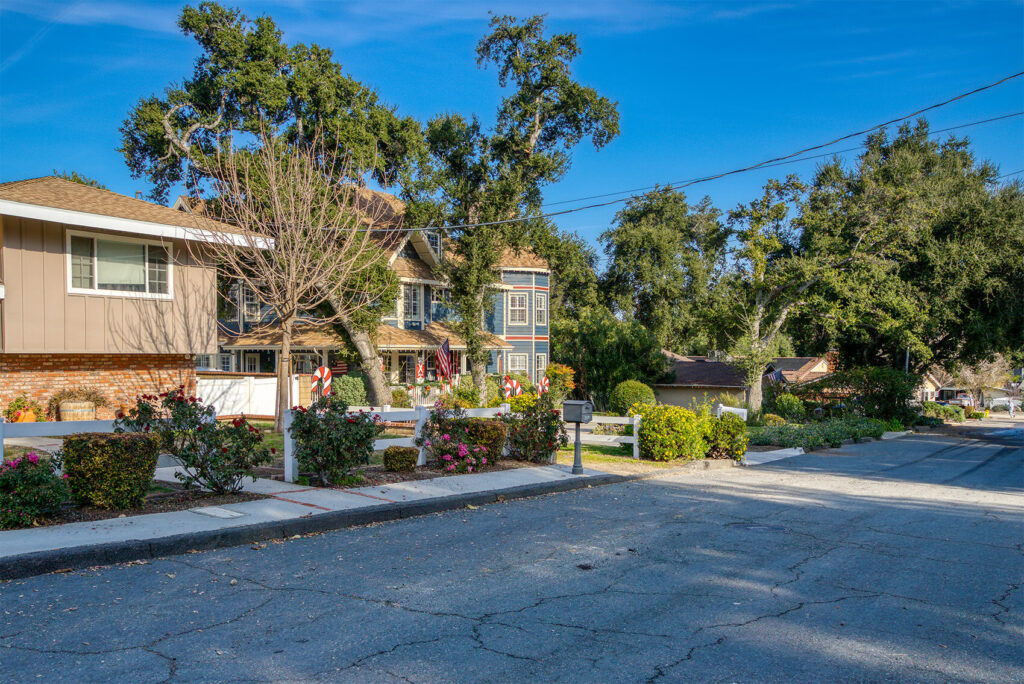Selling a house can feel overwhelming, especially if your property needs repairs or updates. You might wonder if you can sell your house “as is” in California without spending time or money fixing it up. The good news? It’s entirely possible, and it could even save you a lot of hassle.
California’s real estate market offers options for homeowners looking to sell without making improvements. Whether you’re dealing with financial challenges, inherited property, or just want a quick sale, selling “as is” can be a practical solution. Understanding the process and what to expect can help you make the best decision for your situation.
What Does Selling a House “As Is” Mean?
Selling a house “as is” means offering the property in its current condition without making repairs or modifications. In this type of sale, you disclose any known issues to buyers but won’t fix them before the transaction.
Buyers in an “as is” sale acknowledge that they accept the property’s defects, such as structural damage, outdated systems, or cosmetic problems. For example, damaged roofing, plumbing issues, or peeling paint fall under this category. However, California law requires you to disclose material facts, regardless of selling “as is.”
This approach often attracts cash buyers, real estate investors, or those looking for fixer-upper properties. These groups typically seek discounted prices to account for renovation costs. Selling “as is” also speeds up the process by removing repair negotiations from the equation.
Are There Legal Requirements To Sell a House As Is in California?
Selling a house “as is” in Santa Clarita—whether in Valencia, Canyon Country, Saugus, Stevenson Ranch, or Newhall—comes with specific legal obligations. While you aren’t required to make repairs, California state laws mandate clear and transparent disclosure of the property’s condition. Understanding these requirements ensures a smoother selling process and helps attract the right buyers.
Disclosure Obligations for Sellers
California law requires you to disclose material defects when selling a property “as is.” You must complete a Transfer Disclosure Statement (TDS), detailing known issues like roof leaks, plumbing problems, or electrical faults. Additionally, you need to provide a Natural Hazard Disclosure (NHD) report to indicate risks such as flood zones or earthquake-prone areas. If you fail to disclose such information, buyers may file legal claims even after the sale.
Necessary Inspections and Reports
While inspections aren’t mandatory for sellers, some buyers may request them as part of their due diligence. Providing reports, such as a pest inspection or home inspection, can make the process smoother. If certain issues, like lead-based paint in homes built before 1978, are relevant, federal law requires you to provide specific disclosures.
Pros and Cons of Selling a House As Is in California
Selling your house “as is” in California offers unique opportunities and challenges. Understanding both sides can help you evaluate whether this approach aligns with your goals.
Advantages of Selling As Is
- Faster Sale Process
Listing a house “as is” often attracts buyers like cash investors or flippers, reducing the time to close the sale. Without repairs or renovations, the sale timeline shortens, making this option ideal for quick moves or financial urgency.
- Lower Upfront Costs
Skipping repairs or updates eliminates significant expenses. You can sell the house in its current state and avoid costs like fixing plumbing issues, replacing faulty roofs, or upgrading appliances.
- Reduced Stress
Selling “as is” minimizes the stress of meeting buyer demands or overseeing renovations. Negotiation focuses more on price rather than repair requests, simplifying the process.
- Suitable for Distressed Properties
This method works well if your property has significant issues, like outdated systems or structural damage. Buyers typically expect lower prices and accept properties needing work.
Potential Drawbacks to Consider
- Lower Sale Price
“As is” homes usually sell for less since buyers factor in the cost of repairs. This reduced price can impact homeowners looking to maximize their return.
- Limited Buyer Pool
Not all buyers consider purchasing “as is” properties, narrowing your audience to real estate investors, cash buyers, or those open to renovations. This can extend the time to receive an offer.
- Disclosure Obligations
You’re legally required, under California law, to disclose all known material defects. Failing to do so risks legal action from buyers, creating potential liabilities even after the sale.
- Buyer Negotiations
Although the “as is” condition suggests no repairs, buyers may still request discounts or concessions for major issues uncovered during inspections.
How To Sell a House As Is in California
Selling a house “as is” in California requires careful planning to comply with legal obligations and maximize its appeal. Following key steps simplifies the process and attracts the right buyers.
Preparing Your Property for Sale
Decluttering reduces distractions and highlights the home’s potential. Remove personal items, clear excessive furniture, and handle basic cleaning tasks to make the property presentable. Ensure all utilities like electricity and water are functional, as buyers need a working environment for inspections or walkthroughs.
Gather essential documents, including the Transfer Disclosure Statement (TDS) and Natural Hazard Disclosure (NHD) report, to satisfy legal requirements and build buyer confidence.
Setting the Right Price
Pricing a house “as is” requires considering its current condition and market trends. Analyze comparable sales of similar non-updated properties in your area to set a competitive price. Factor in estimated costs for repairs buyers may need to undertake and adjust accordingly. Overpricing risks reducing interest, while a fair price attracts serious cash buyers or investors seeking quick deals.
Marketing Strategies for “As Is” Properties
Targeting the right audience ensures effective marketing of your property. Highlight selling points like location, lot size, or potential renovation opportunities in your listings. Use phrases such as “investor special” or “fixer-upper” to attract cash buyers and real estate investors who expect discounted properties.
Instead of relying solely on large platforms, working with a local real estate expert can help you reach the right buyers faster. Holly Thompson specializes in marketing “as is” properties in Santa Clarita, using customized strategies to showcase your home’s potential and connect with motivated buyers. Whether you’re looking for a quick sale, investor outreach, or a competitive market analysis, Holly can guide you through the process and maximize your property’s value.
Is Selling As Is Right for You?
Selling your house “as is” in California has unique advantages but isn’t suitable for everyone. Assess your goals, circumstances, and property condition before committing to this approach.
Factors to Consider Before Deciding
Evaluate your property’s current state and market demand. Severe issues like foundation damage, mold, or outdated systems may deter conventional buyers but attract investors or cash buyers. Consider your financial situation—selling “as is” eliminates costly repairs but often results in a lower sale price.
Analyze your timeline. If you need a quick sale due to relocation, financial constraints, or other reasons, the “as is” route may speed up the process. Keep legal obligations in mind, such as mandatory disclosures under California law. Transparency about defects is critical to avoid future legal disputes.
Comparing Alternatives to Selling As Is
Review other options like making minimal repairs or renovations. For instance, addressing minor issues like peeling paint or broken fixtures can increase buyer interest without significant expenses. Depending on your property’s value, investing in key upgrades like a new roof or updated kitchen could yield higher returns.
Evaluate selling to cash buyers versus listing traditionally. With cash buyers or investor sales, the process is faster but may fetch a lower price. Traditional listings generally appeal to a wider buyer pool but require time and effort to prepare the home for showings. Weigh these alternatives to decide if selling “as is” meets your objectives.
Key Takeaways
- Selling a house “as is” in California is entirely possible and can save time, money, and effort by avoiding repairs or updates.
- California law requires sellers to disclose all known issues, including via the Transfer Disclosure Statement (TDS) and Natural Hazard Disclosure (NHD) report.
- Selling “as is” often appeals to cash buyers, investors, or those seeking fixer-upper properties, allowing for a faster sale process.
- While beneficial for quick sales and reducing upfront costs, selling “as is” typically results in a lower sale price and a limited buyer pool.
- Proper preparation, competitive pricing, and targeted marketing can increase the chances of successfully selling an “as is” property.
- Before deciding, evaluate your property’s condition, timeline, financial situation, and alternatives, such as minor repairs or upgrades, to maximize your outcome.
Conclusion
Selling your house “as is” in California can be a practical option if you’re looking to save time, avoid repair costs, or simplify the selling process. By understanding the legal requirements, disclosing known issues, and targeting the right buyers, you can navigate this approach confidently. Consider your goals, financial situation, and property condition to decide if this strategy aligns with your needs. With the right preparation, selling “as is” can be a straightforward and effective solution.
Thinking about selling your home “as is”? Contact Holly Thompson today for expert guidance on pricing, disclosures, and finding the right buyers.
Frequently Asked Questions
What does selling a house “as is” mean in California?
Selling a house “as is” means offering the property in its current condition without making repairs or updates. Buyers accept the property with all known defects, such as structural issues or outdated systems. Sellers are still legally obligated to disclose any known problems under California laws.
Do I have to disclose issues with my property if I sell it “as is”?
Yes, California law requires sellers to disclose known material facts about the property, even in an “as is” sale. This includes completing a Transfer Disclosure Statement (TDS) and a Natural Hazard Disclosure (NHD) report to inform buyers about potential risks and defects.
Who typically buys houses “as is” in California?
“As is” sales often attract cash buyers, real estate investors, and fixer-upper enthusiasts. These buyers are typically looking for discounted properties they can renovate or flip for profit. However, a limited buyer pool means the sale price may be lower.
What are the advantages of selling a house “as is”?
The main benefits of selling “as is” include a faster sale process, reduced costs since no repairs are needed, lower stress for sellers, and suitability for distressed or inherited properties. This can be a convenient option for those needing a quick sale.
What are the drawbacks of selling “as is”?
Selling “as is” often results in a lower sale price and appeals to a limited buyer pool. Additionally, strict disclosure laws must still be followed, and buyers may negotiate despite the “as is” condition. This approach may not suit every homeowner’s goals.
Do I need to get an inspection before selling “as is”?
Inspections are not mandatory for sellers, but buyers may request them. Providing inspection reports can help build trust and facilitate the sale. However, sellers should disclose all known issues with or without a formal inspection.
How can I attract buyers when selling my house “as is”?
To attract buyers, set a competitive price by analyzing comparable sales and accounting for repair costs. Use effective marketing strategies like targeting cash buyers or investors, highlighting the property’s potential, and advertising on high-visibility online platforms.
Is selling “as is” faster than traditional real estate sales?
Yes, selling “as is” is typically faster since it eliminates the need for repair negotiations and avoids delays caused by fixing issues. This approach is ideal for homeowners seeking a quick sale due to time constraints.
Can I decide not to sell “as is” after listing my home?
Yes, you can change your approach and make necessary repairs or updates to list the home traditionally. Opting not to sell “as is” might broaden your buyer pool and increase the property’s value, but it may require more time and investment.
How do I determine if selling “as is” is right for me?
Consider your goals, property condition, financial situation, and timeline. If the home requires significant repairs or you need a quick sale, “as is” may be the best option. Evaluate market demand and compare alternatives like partial repairs before deciding.




